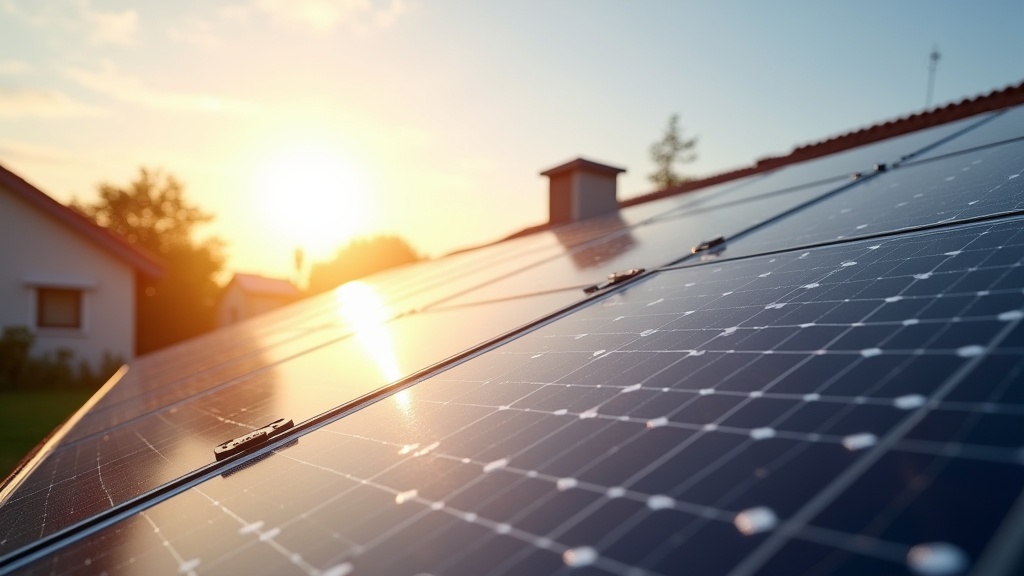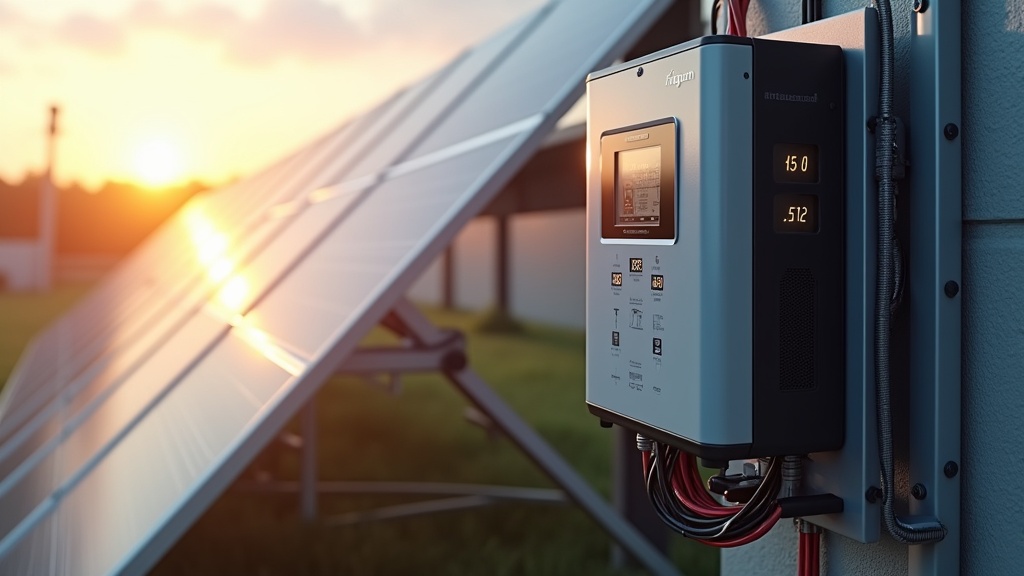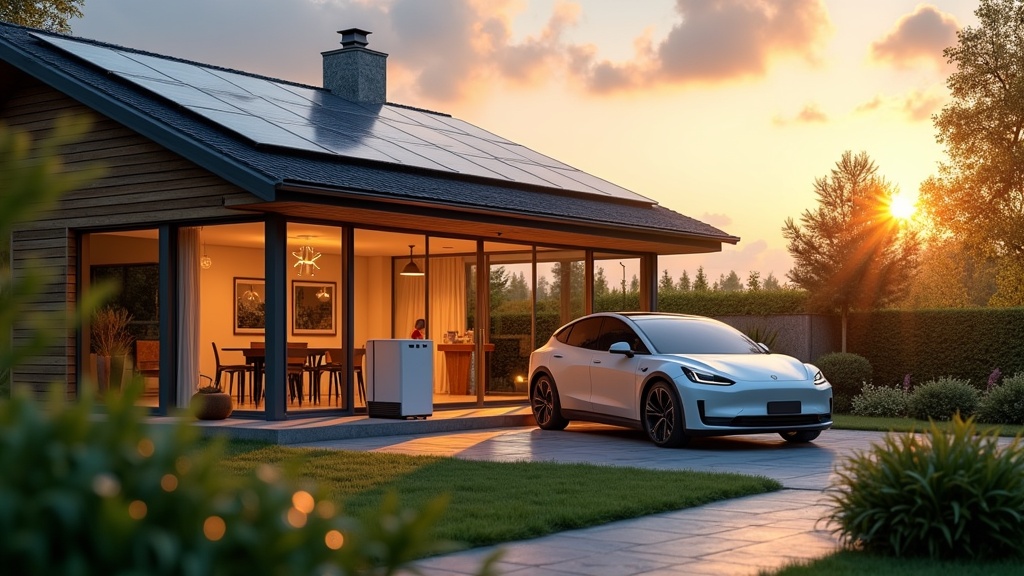
When I embraced solar power for the first time, a whirlwind of components and processes nearly overwhelmed me. However, driven by curiosity, I delved into the intricacies of this remarkable technology. Now, I’m excited to explain the workings of a solar power system—an endeavor that is both captivating and empowering.
At the core of this sophisticated system lie solar panels—devices made of semiconductor materials like silicon. They serve as the gateway to harnessing sunlight, efficiently converting it into electrical energy through the photovoltaic effect. However, the journey doesn’t end there. The direct current (DC) electricity generated by these panels requires transformation into the alternating current (AC) that flows through our homes daily. This vital role is fulfilled by inverters, the unsung heroes of solar technology.
Additionally, the significance of battery storage cannot be overlooked. This essential feature acts as a reliable reservoir, ensuring we remain powered even when the sun isn’t shining. While the installation and wiring of these systems may seem complex, I assure you they are manageable with the right guidance.
In essence, a solar power system converts sunlight into electricity through solar panels, which is then transformed by inverters into usable household power, with battery storage serving as our safeguard during sunless hours.
I am passionate about spreading awareness regarding the accessibility and advantages of solar energy. Whether you’re a homeowner eager to slash energy bills or simply curious about renewable energy solutions, grasping the fundamentals—such as solar panels, inverters, and battery storage—will empower you to make informed and sustainable decisions. Embrace the opportunity, explore the possibilities, and tap into the boundless energy of the sun. This is a choice you won’t regret.
Solar panels convert electrical energy directly into sunlight.False
This statement is false; solar panels convert sunlight into electrical energy.
Inverters transform DC electricity from solar panels into AC electricity.True
This statement is true; inverters are essential for making solar power usable.
What Are the Essential Components of a Solar Power System?

As I embarked on my quest for a sustainable lifestyle, grappling with the workings of solar power systems was a challenge. Understanding how solar panels, inverters, battery storage, and their associated components combine into an effective energy solution left me bewildered. However, delving into this realm of renewable energy revealed not just a commitment to sustainability, but a pathway to energy independence.
Picture the sun as a boundless power source lighting your home. It’s more than just panels soaking up rays atop your roof. The solar power system is akin to a finely tuned orchestra, wherein solar panels capture sunlight, inverters transform it into usable electricity, and batteries store surplus energy for those dreary, overcast days. Important components that keep this harmony include charge controllers for safeguarding batteries, disconnect switches for safety, and sturdy mounting systems that ensure stability.
At the heart of my learning experience lies a realization: a solar power system effectively captures, converts, stores, and manages solar energy through its components. Embracing this knowledge has deepened my appreciation for each element’s role in fostering a sustainable future. My hope is to ignite a spark in you to explore this remarkable technology. Why not take that step? Start by familiarizing yourself with these essential components and discover how they can enhance your life while nurturing our planet.
How Do Solar Panels Generate Electricity?

As I delved into solar energy, I was captivated by the intricate nature of solar power systems. The question echoed in my mind: “How do solar panels work?” Understanding the essential principles behind photovoltaic cells and their role in electricity generation clarified this for me.
Envision a sunlit day, where sunlight transforms into power for your home. This is the essence of solar panels. They consist of photovoltaic cells, primarily made from silicon, which harness the sun’s rays and convert them into direct current (DC) electricity through the photovoltaic effect. It feels like an enchanting process unfolds atop my roof with every beam of sunlight.
The journey of this direct current (DC) electricity entails conversion into alternating current (AC), the form of electricity we rely on daily. This transformation is orchestrated by a device called the solar inverter, which plays a vital role in the solar power system. Understanding this conversion process has bolstered my confidence in integrating solar energy into my lifestyle.
My understanding of solar power systems has profoundly shifted my perspective. By capturing the sun’s energy, these systems significantly lower my electricity costs while paving the way for a sustainable future. If you’re intrigued by solar technology, grasping these foundational concepts will be an exhilarating first step in your solar journey. I hope exploring this topic enlightens you just as it has for me.
Featured Snippet Summary: In my exploration of solar power, I learned that solar panels convert sunlight into electricity via photovoltaic cells, which is transformed into usable AC power through solar inverters.
What Role Do Inverters Play in a Solar System?

When I started exploring the solar energy sector, I was fascinated by how solar systems function, especially the key role of solar inverters. Initially, I struggled to understand how these devices convert direct current (DC) generated by solar panels into alternating current (AC) for household appliances. However, learning more revealed that the solution lies in the solar inverter’s symbiotic relationship with the grid.
The inverter does more than just convert energy; it employs Maximum Power Point Tracking (MPPT) technology, which optimizes energy output. This innovative technology continuously monitors and adjusts to maximize electricity generation, thus enhancing overall efficiency.
Ultimately, solar systems rely on inverters to convert DC into AC while managing energy output through MPPT technology, ensuring safe and reliable power supply.
This journey has shown me that inverters enhance energy flow—making sunlight transformed into power a truly remarkable feat.
How Does Battery Storage Enhance Solar Power Systems?

When contemplating a solar power system’s installation, a lingering question was: “Once the sun sets, will I still depend on the grid?” My curiosity led to the realization that battery storage is the solution. These devices not only capture and retain solar energy harnessed during the day but also enable its use throughout the night. This realization emphasized a self-sufficient lifestyle.
Battery storage efficiently retains excess electricity generated in daylight, ready for use during evenings or inclement weather, significantly reducing reliance on the grid. This capability enhances energy independence, allowing me to sustain myself and balance peak demand, alleviating strain on the grid while lowering energy costs. This experience has been incredibly gratifying.
Moreover, integrating a battery storage system has made charging my electric vehicle more sustainable, using green energy produced from sunlight. Consequently, my home is not only eco-friendlier but has also increased in asset value. It’s a rewarding sensation. Are you ready to explore how this transformation can elevate your life? Embrace a future that is stable and environmentally mindful.
What Is Involved in the Installation and Connection of a Solar System?

Reflecting on my initial thoughts about installing a solar power system at home, I found the complexity overwhelming. I pondered: “What are the mechanics behind a solar system, and can I embark on this journey alone?” However, as I explored further, I discovered that the process is enlightening and comprehensible when broken down into clear steps.
The journey begins with the installation of solar panel mounts—an essential task requiring precision. These mounts must be aligned to face true south, at an optimal tilt angle of 15 to 20 degrees. This alignment is crucial for maximizing sunlight capture. Once the mounts are securely installed, the next step is the installation of the solar panels, ensuring they are fixed to withstand various elements.
Next, we enter the more complex realm of electrical wiring and inverter connection. This stage is critical, as the inverter’s role is to convert the DC electricity produced by solar panels into AC electricity suitable for household use. Understanding how to link the inverter effectively to the main electrical panel is vital for ensuring smooth operations.
The final step is connecting the system to the grid. Knowing whether a direct connection or AC coupling best suits your needs significantly impacts overall efficiency. Once all components are integrated, your solar system can meet your energy demands and allow surplus electricity to flow back into the grid.
Conclusion
In summary, understanding solar power systems is crucial for anyone looking to embrace renewable energy. Components such as solar panels, inverters, and battery storage all play critical roles in effectively harnessing the sun’s power. By investing in solar technology, individuals can reduce their electricity bills while contributing to a more sustainable future.
Acquiring knowledge about solar energy can empower informed decisions that transform energy consumption. As we navigate the challenges of energy reliance, exploring solar solutions presents opportunities for independence and environmental stewardship.
I encourage readers to delve deeper into solar technologies, considering not just the immediate benefits but also the long-term impacts on energy security and the environment. With ongoing advancements, solar power holds the key to a sustainable energy future for all.


